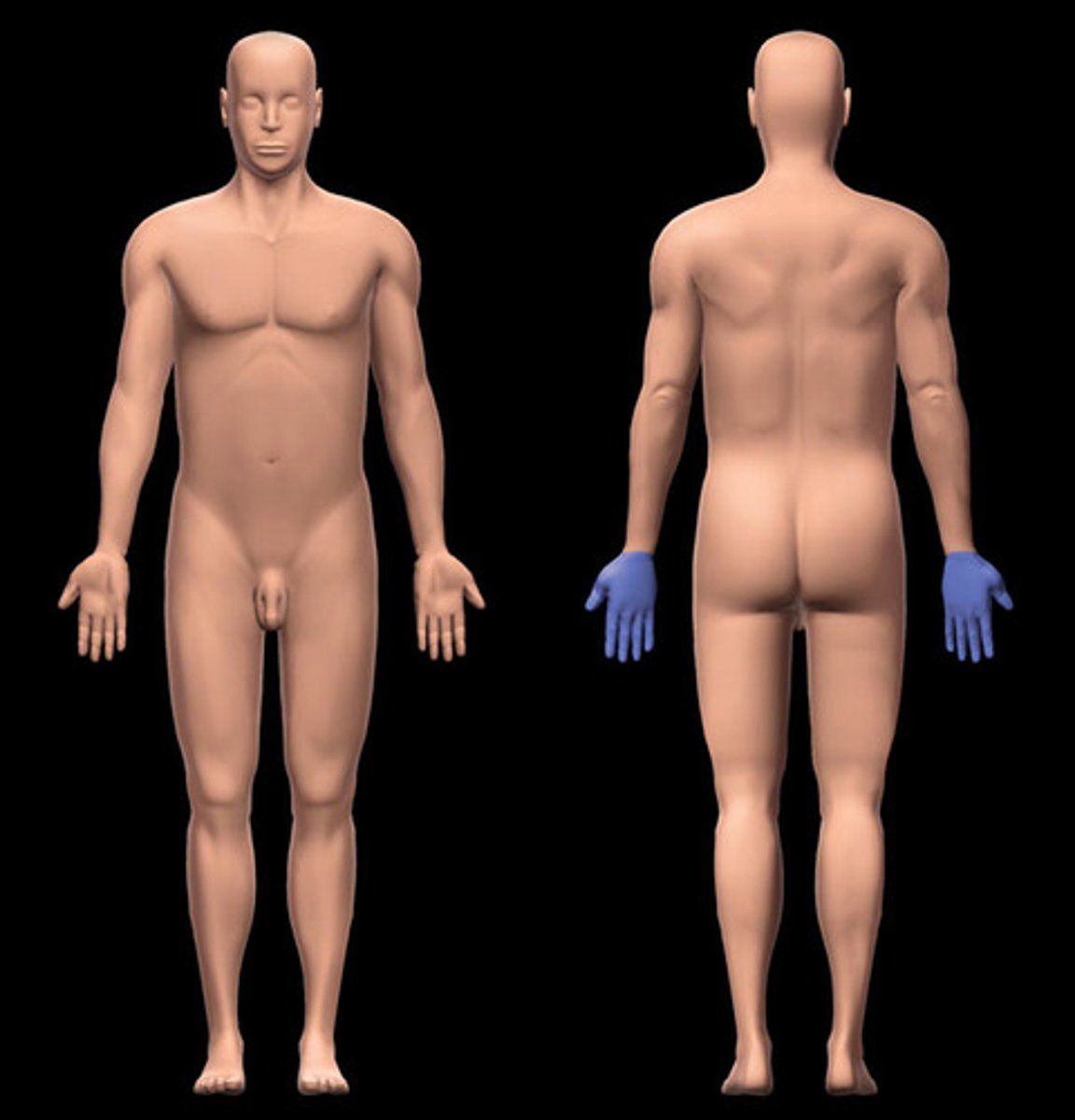The Full Complete Human Body Anatomy
1/176
There's no tags or description
Looks like no tags are added yet.
Name | Mastery | Learn | Test | Matching | Spaced |
|---|
No study sessions yet.
177 Terms
From East Africa, Asia, and Europe and called Primates
What are the human ancient origins from and called?
Humans share common ancestors with chimpanzees 5-8 million years ago
What do humans share a common ancestor with and how many years ago?
DNA (Deoxyribonucleic acid)
What is the blueprint for all life?
Provides a set of instructions on how to assemble the many thousands of different proteins that make us who we are
What does DNA do for all life?
10
How many base pairs does each twist of the double helix contain?
Amino acids
What does protein consist of?
Regions thats have no known function (long repeats)
What is junk DNA?
97%
How much percent is junk DNA?
75 trillion
How many cells are in the human body?
The Cell
What is the basic functional unit of life?
Yes
Do we replace cells everyday?
When individual cells break down nutrients to generate energy for building new proteins or nucleic acids
What is cell metabolism?
More than 200
How many different type of cells are in the human body?
Muscle, Connective, Nervous, and Epithelial
What are the four main types of tissues in the human body?
carry oxygen
What does red blood cells do?
store fat
What do adipose cells do?
To fertilise an egg
What do sperm cells do?
To help to protect or enclose organs through skin
What does epithelial cells do?
Send chemical and electrical messages that allow you to think and move
What do nerve cells do?
Egg cells for women
What are ovum cells?
cells that are tapered at each end and form a muscle tissue that lilnes the walls of the digestive tract and the walls of blood vessels
What are smooth muscle cells?
Maintain blood pressure and push food through the digestive system
What do smooth muscles do?
A type of flexible connective tisssue
What is cartilage?
Form structures such as ligament and tendons
What is dense connective tissue?
Layers of cells that cover internal and external surfaces
What are epithelial tissues?
Voluntary muscles that are attached to bones
What are skeletal muscles?
Found in the ends of long bones and middle of other bones. Always is surrounded by compact bone.
What are spongy bones?
holds organs in place
What do loose connective tissues do?
Act as an energy store and to cushion, protect, and insulate the body
What do adipose tissues do?
Form the brain, spiral cord, and the nerve that control movement, transmit sensation, and regulate body functions
What do nerve tissues do?
chemical, cell, tissue, organ, organ system, organism
What are the 6 levels of organization?
Endocrine, nervous, respiratory, digestive, muscular, skeletal, reproductive, urinary, cardiovascular, and lymphatic
What are the 10 body stsytems?
A network of vessels and nodes, which drain fluids from the blood capillaries and return to the the veins
What is the lymphatic system composed of?
Maintain fluid balance within the cardiovascular system and distribute immune cells from the immune system
What does the lymphatic system do?
Communicates messages between the rest of the body's systems, enabling them to be closely monitored and controlled
What is the endocrine system?
Hormones
What are the chemical messages called that the endorcrine system uses?
Consists of the brain, spinal cord & nerves & it serve to collect, process, and disseminate information from the body's internal and external environments
What is the nervous system?
Communicate through networks of nerve cells, which connects with every other body system
What does the nervous system do?
Controls and monitors all of these systems to make sure that they are performing normally and receiving everything that they need
What does the brain do in the nervous system?
Where every cells in the body needs oxygen and must get rid of the waste product carbon dioxide in order to function
What is the respiratory system?
takes in oxygen and eliminates carbon dioxide
What does the respiratory system do?
An organ system in which several organs work together to digest and absorb or break down food
What is the digestive system?
Energy
What will the digestive system provide the human body with at the end?
Consists of the Skeletal muscle, smooth muscle, and cardiac muscle
What is the muscular system?
Generating movement both for limbs and within other parts of the body system
What does the musclar system do?
System that uses bones, cartilage, ligaments, and tendons to provide the body with structural support and protection.
What is the skeletal system?
Reproduce offspring- produce male sex cells (sperm) and female sex cells (oocytes)
What is the reproductive system?
Filters and remove many of the waste products generated by the other body systems
What is the urinary system?
By filtering blood through the kidneys and producing urin, which is collected in the bladder and then excerted through the urethra
How does the urinary system remove waste product out of the body?
A system that uses blood to carry oxygen from the respiratory system and nutrients from the digestive system to cells of all the body's system and removes product from these cells
What is the cardiovascular system?
Front
What does anterior mean
Back
What does posterior mean?
Anatomical position
What position does the human being needs to be in to observe all the different parts of the body?
Medial and Lateral
What describes the positions of structures towards the midline, or towards the side of the body?
Superior and Inferior
What refers to vertical position - towards the top and bottom of the body?
Proximal and Distal
What terms are used for the structure in limbs?
Pectoral region
What is this region?
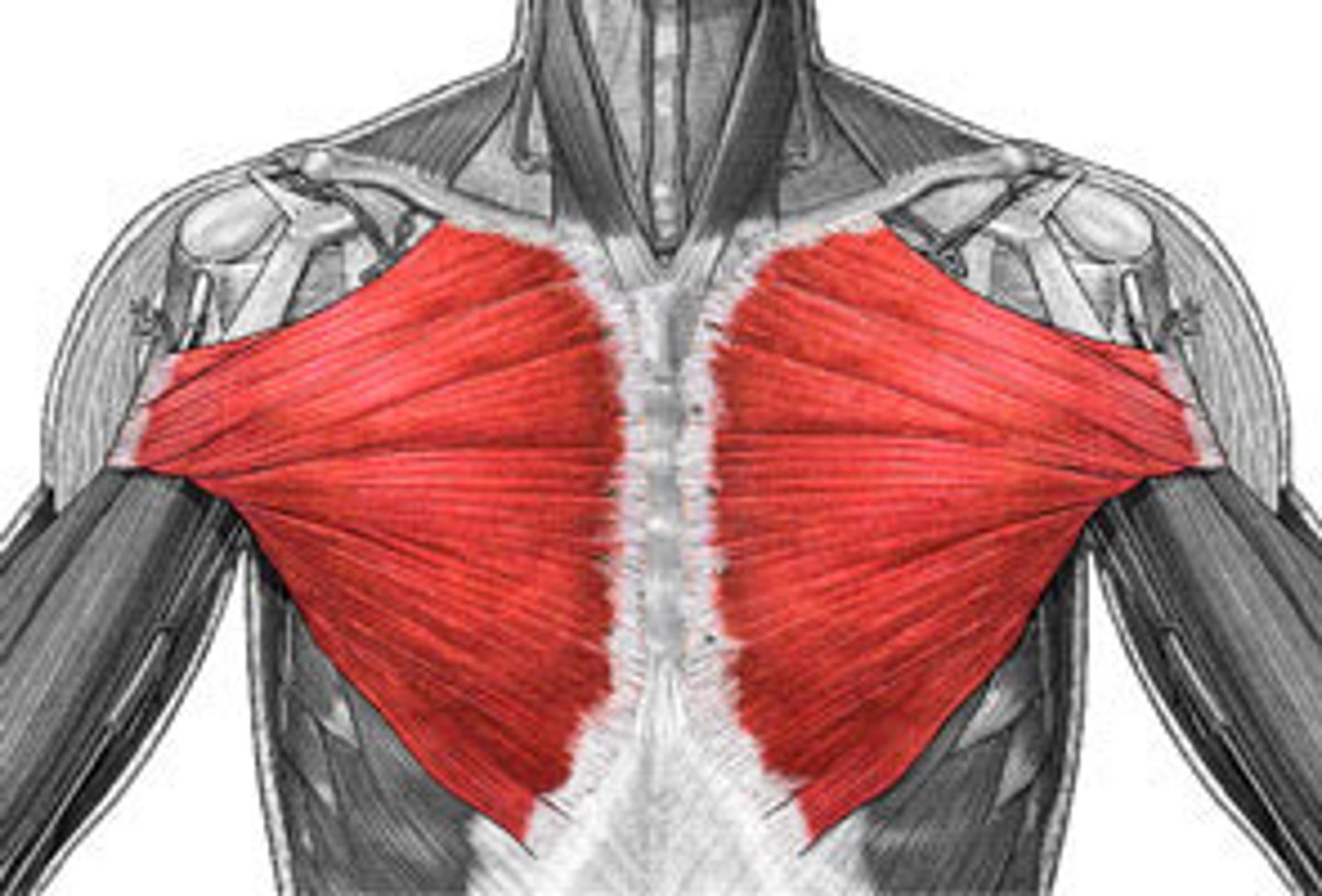
Pectoral region
What region is known as "The chest" and sometimes used to refer to just the upper chest?
Epigastric region
What is this region?
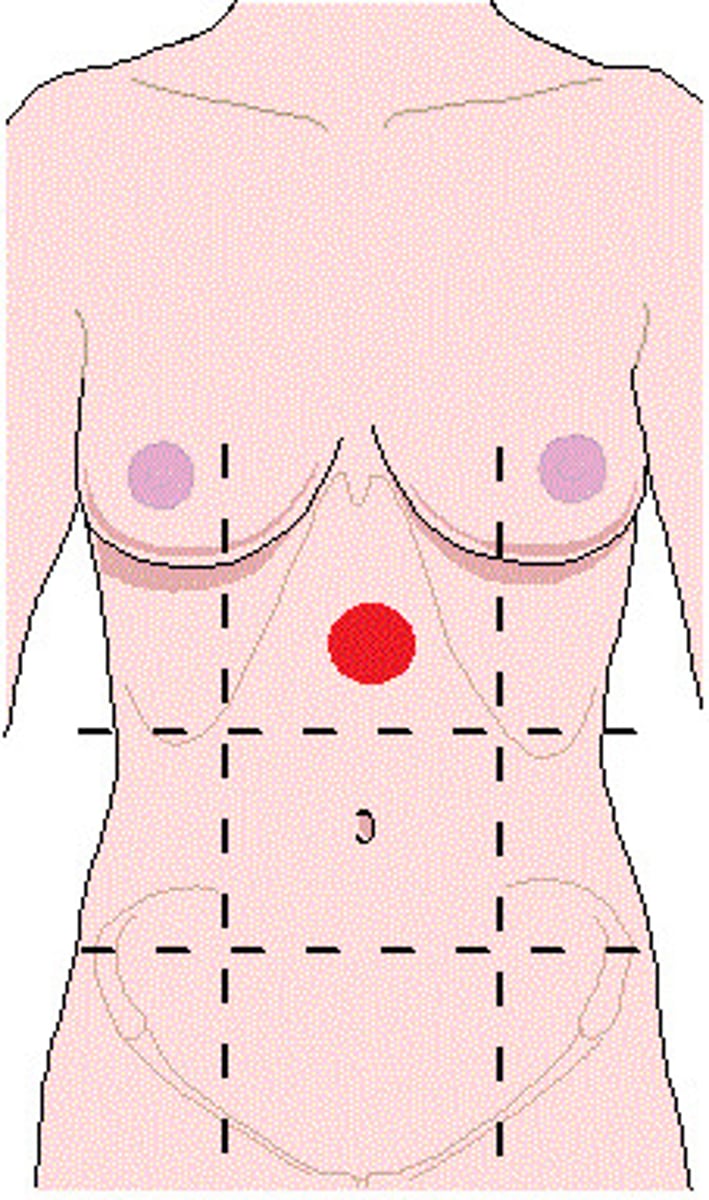
Epigastric region
What is the area of the abdominal wall above the transpyloric plane, and framed by the diverging margins of the ribcage?
Umbilical region
What region is this?
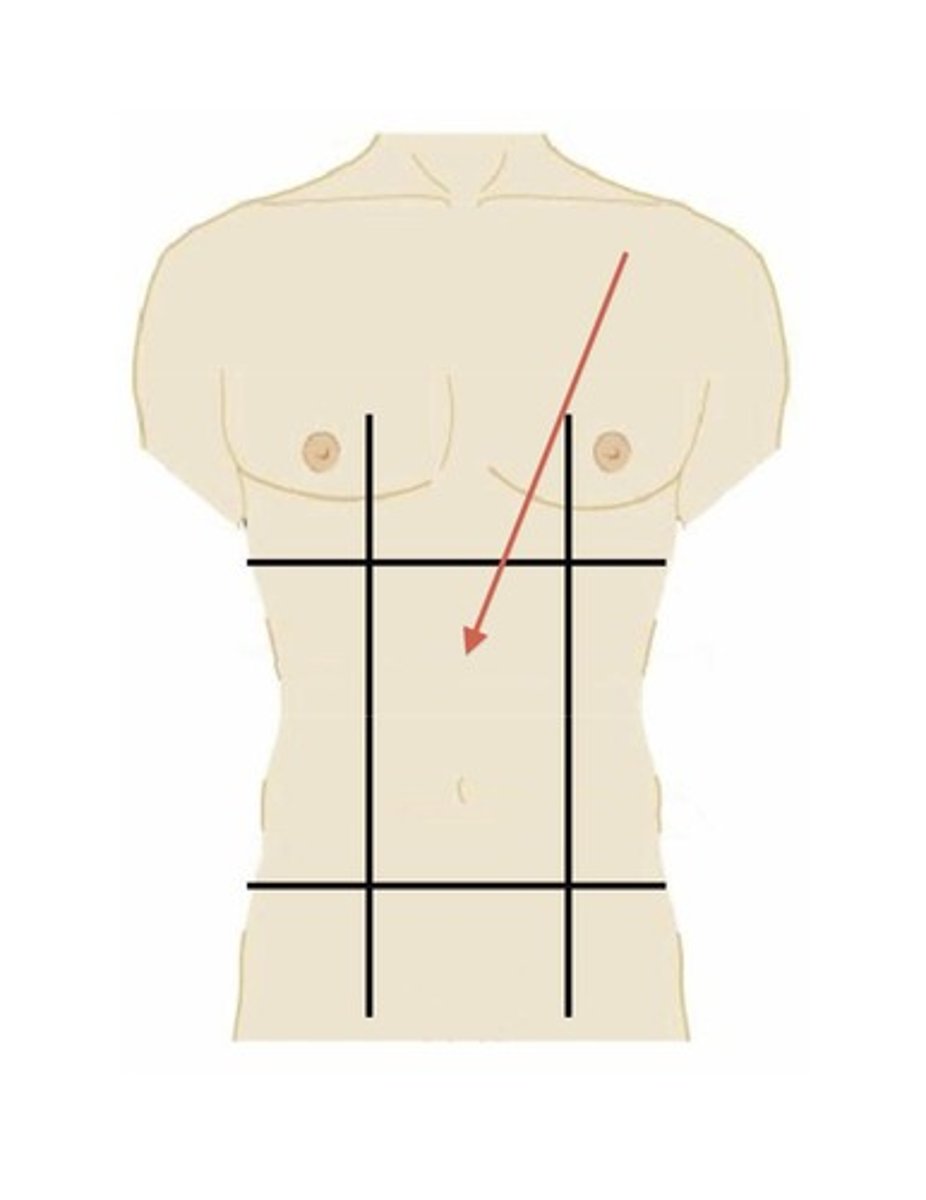
Umbilical region
What is the central region of the abdomen?
Lumbar region
What region is this?
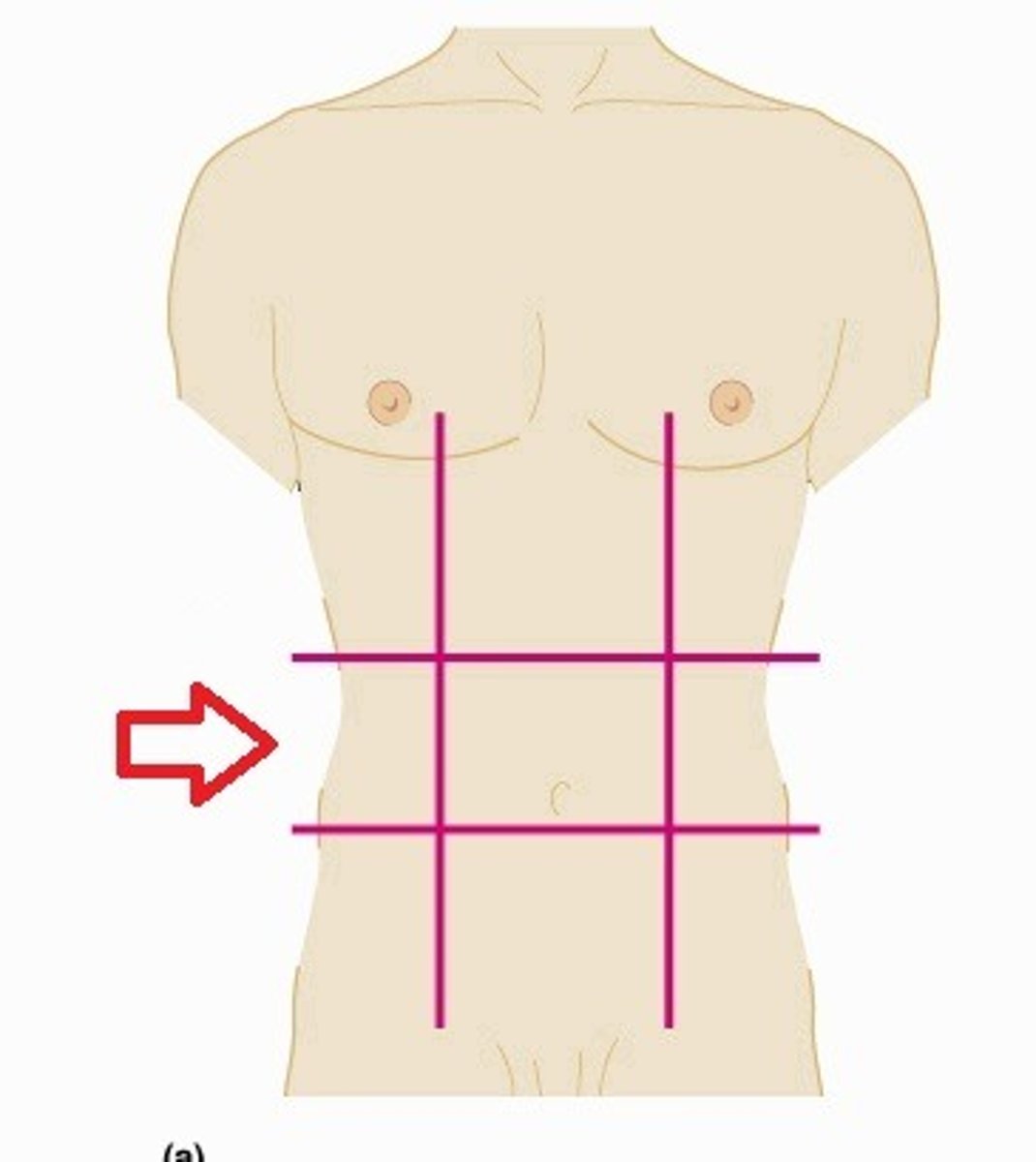
Lumbar region
What refers to the sides of the abdominal wall, between the transpyloric and intertubercular planes?
Intertubercular plane
What plane is this?
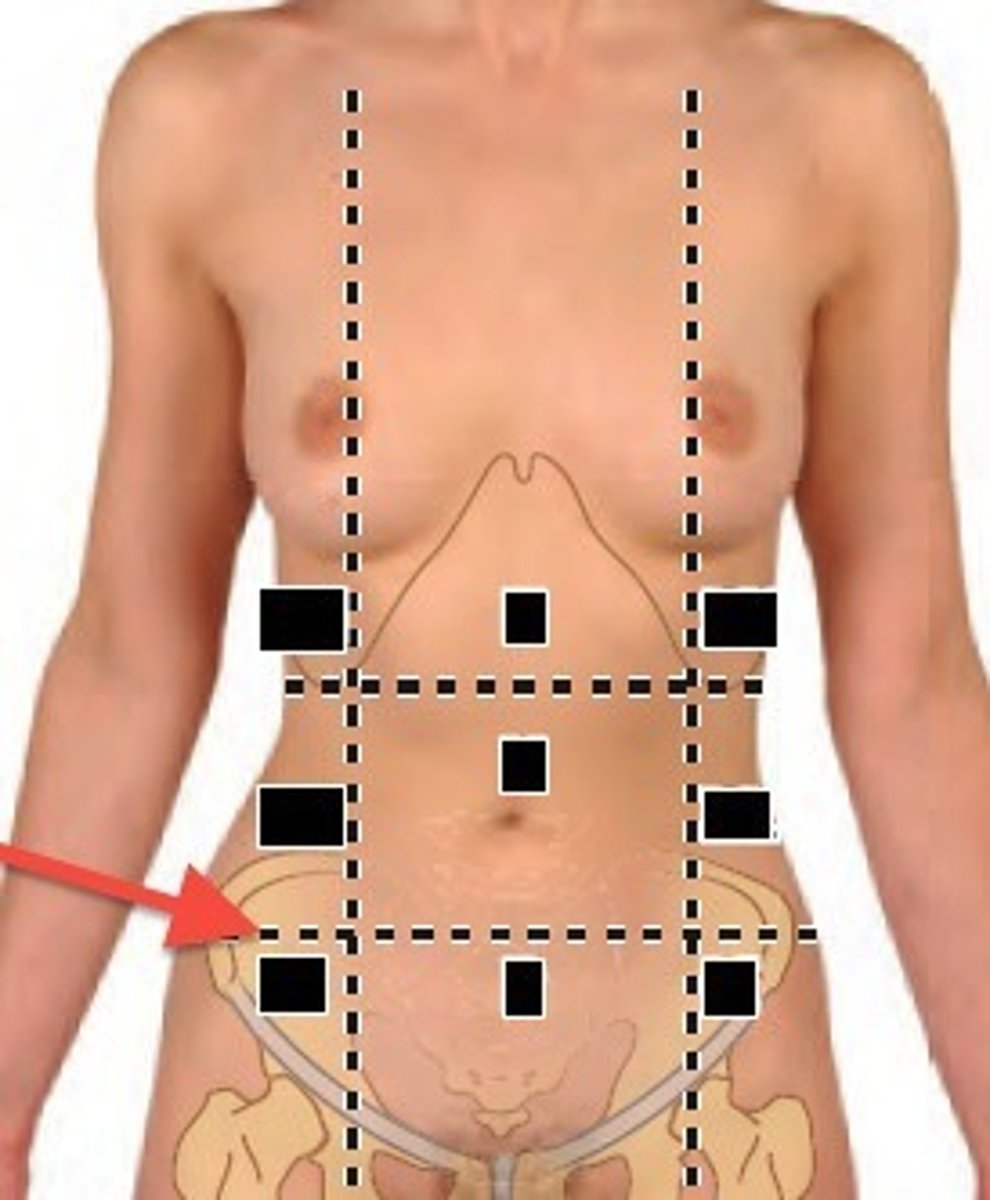
Intertubercular plane
What plane passes through the iliac tubercles?
Iliac region
What region is this?
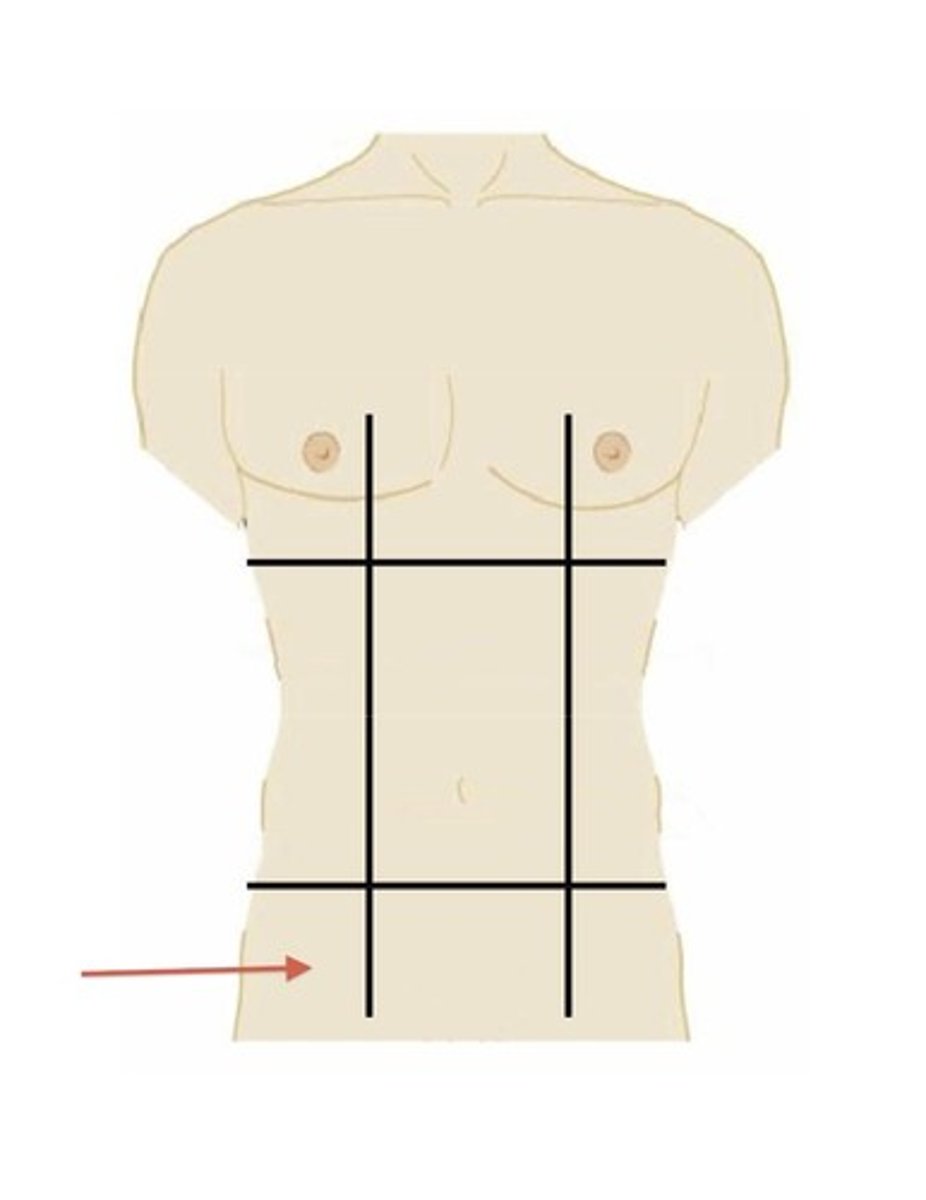
Iliac region
What region is the area below the intertubercular plane and lateral to the midclavicular line?
Midclavicular line
What line is this?
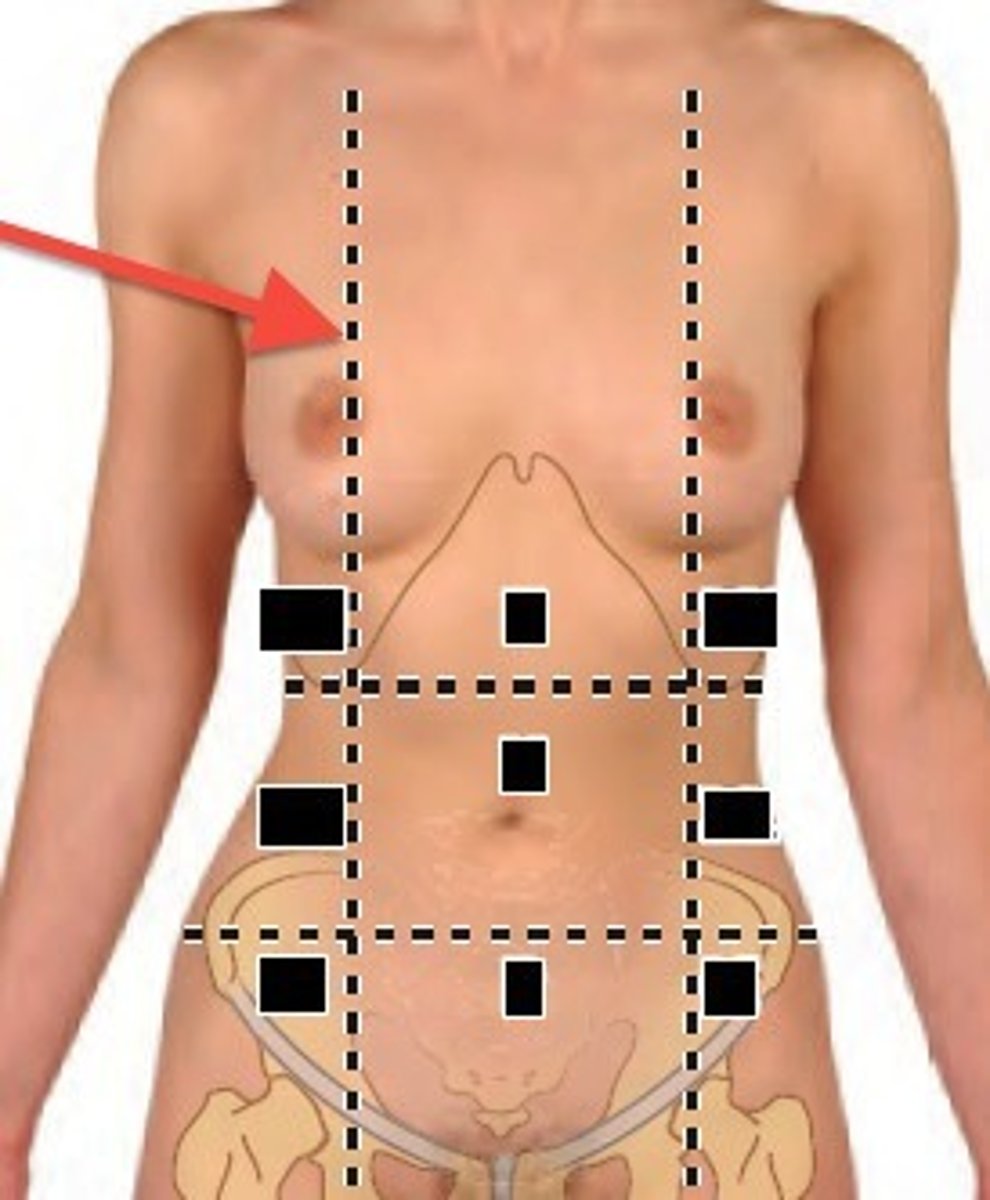
Midclavicular line
What is a vertical line running down from the midpoint of each clavicle?
Axilla
What is this pointing to?
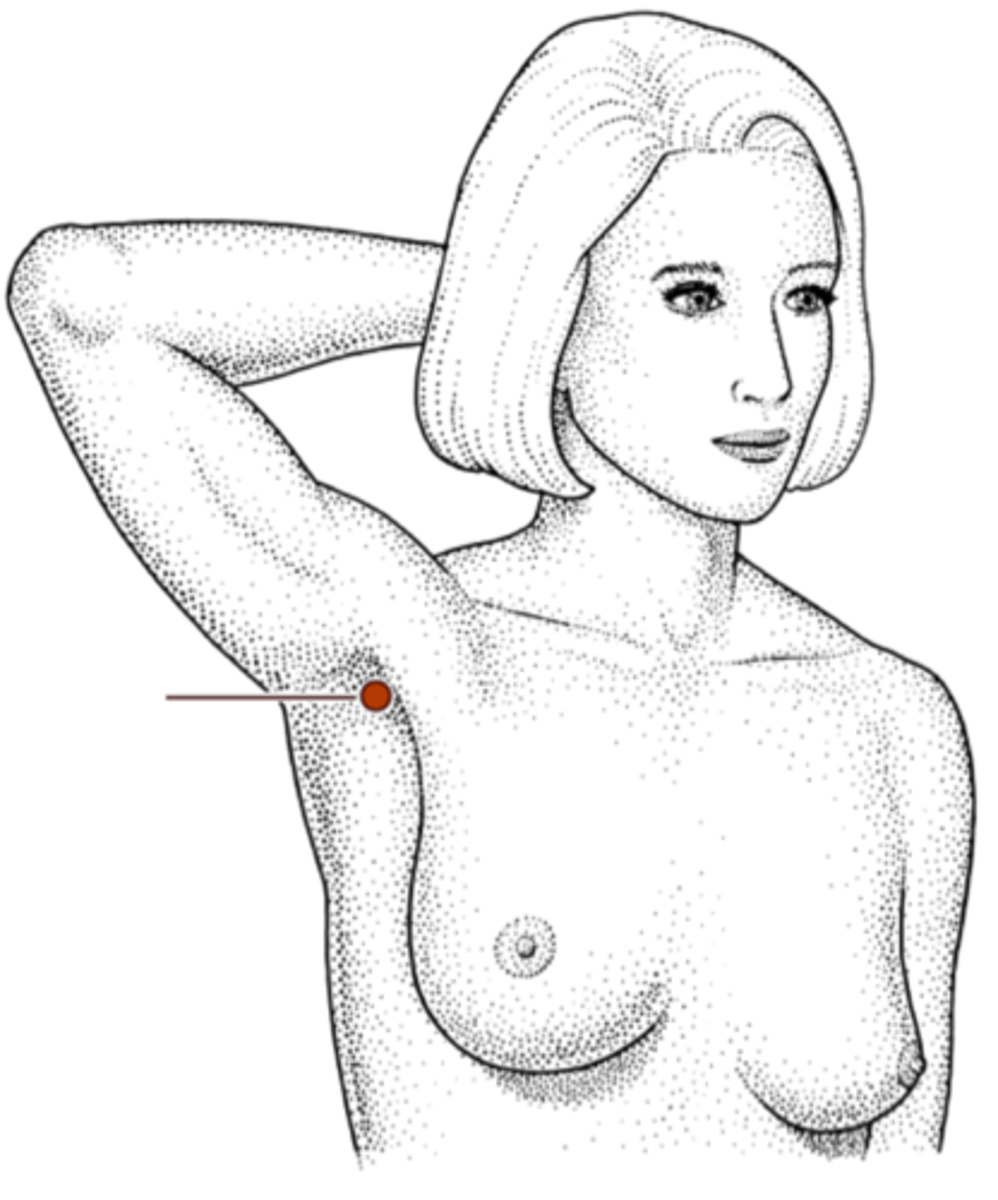
Axilla
What is the name for "armpit?"
Anterior surface of arm
What is this entire picture describing?
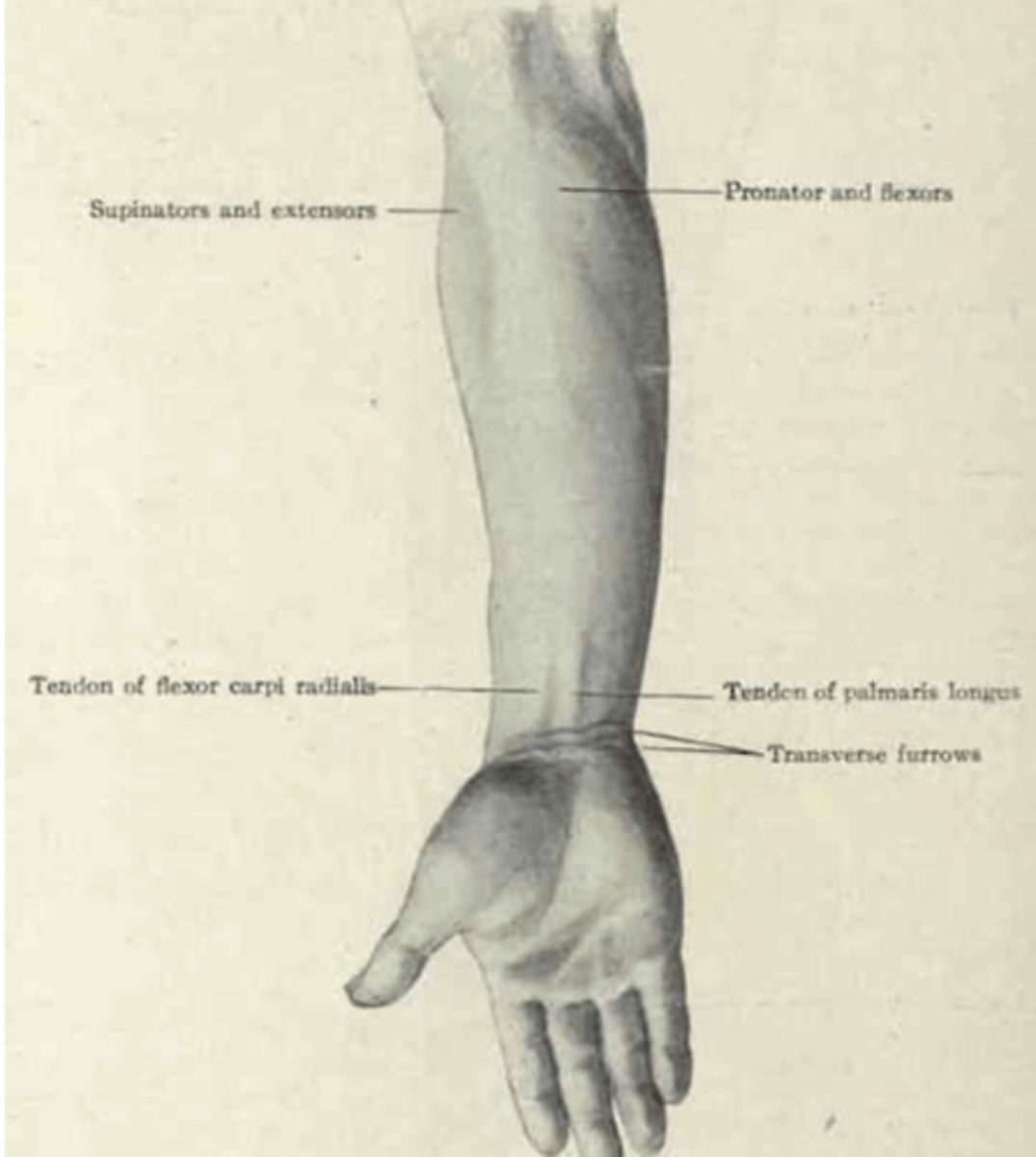
Arm
What is between the shoulders and the elbows?
Hypochondriac region
What region is this?
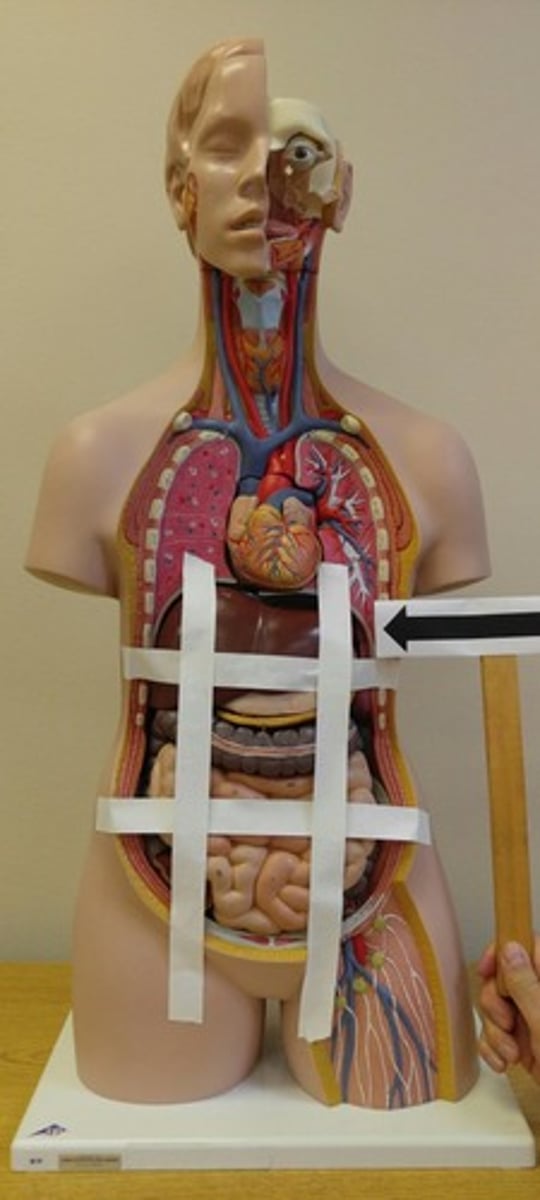
Hypochondriac region
What region is under the ribs on each side?
Transpyloric plane
What plane is this?
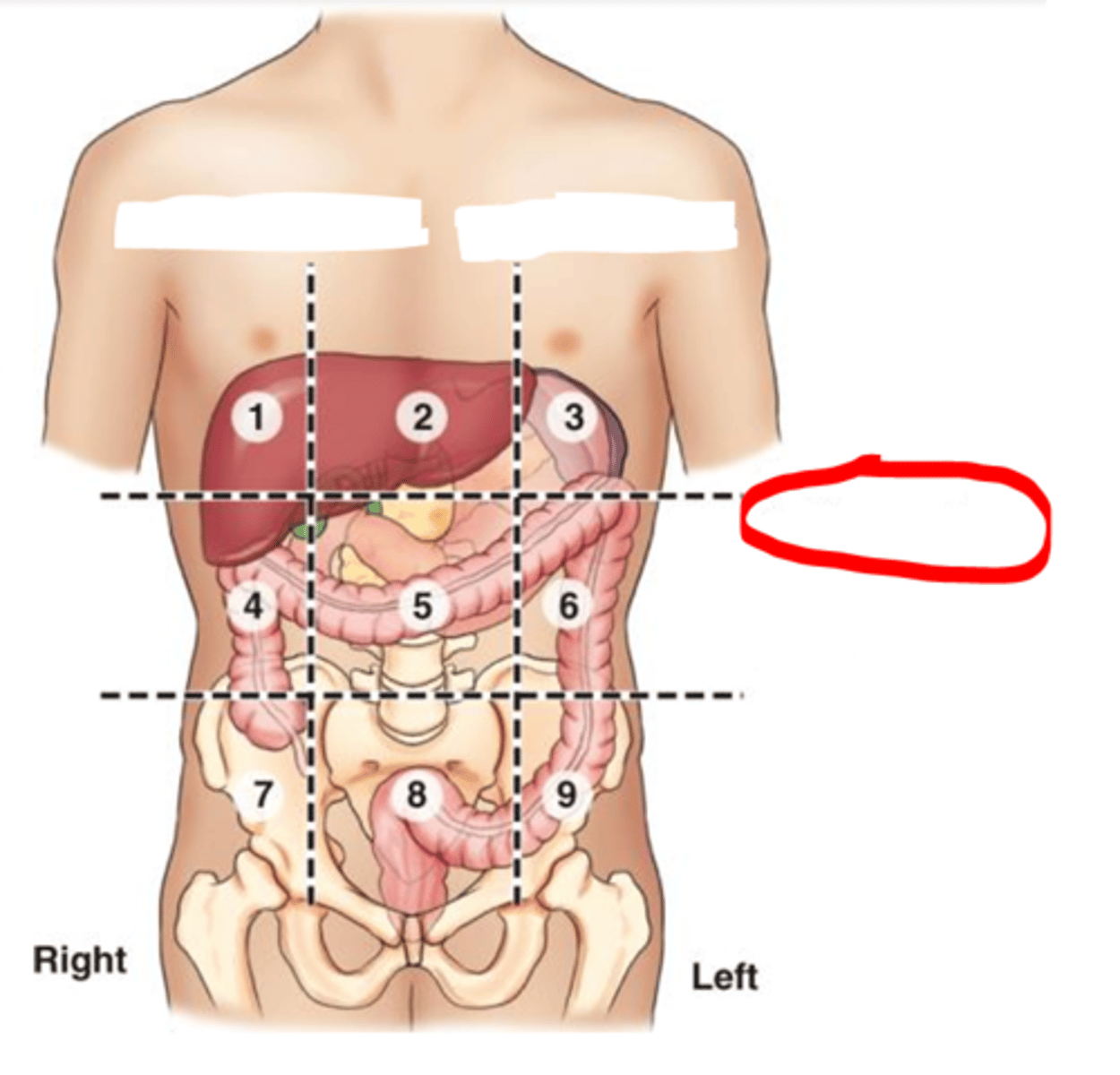
Cubital fossa
What area of the arm is this?
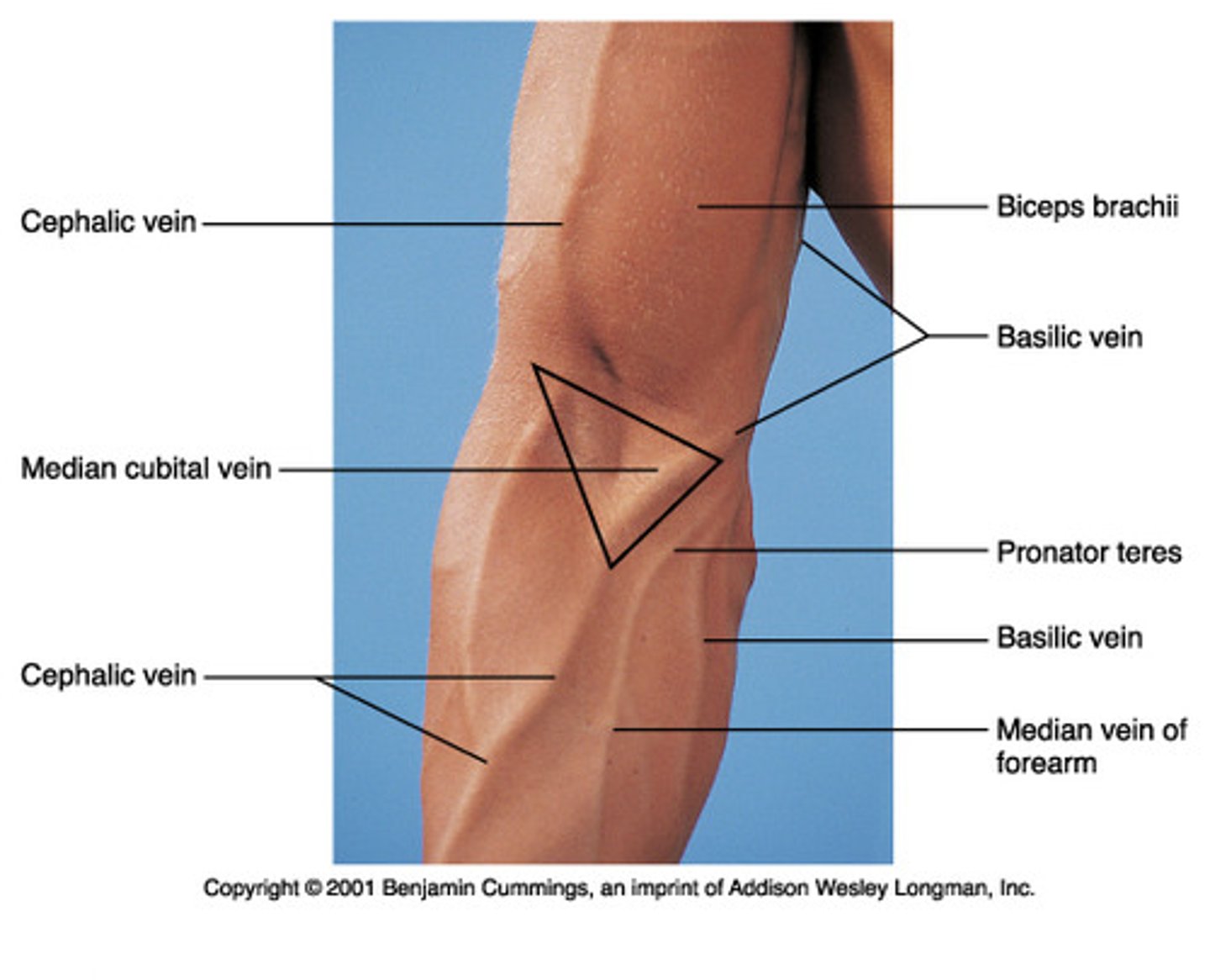
Cubital fossa
What is the triangular area anterior to the elbow?
Anterior surface of the forearm
What is the red describing in the entire picture?
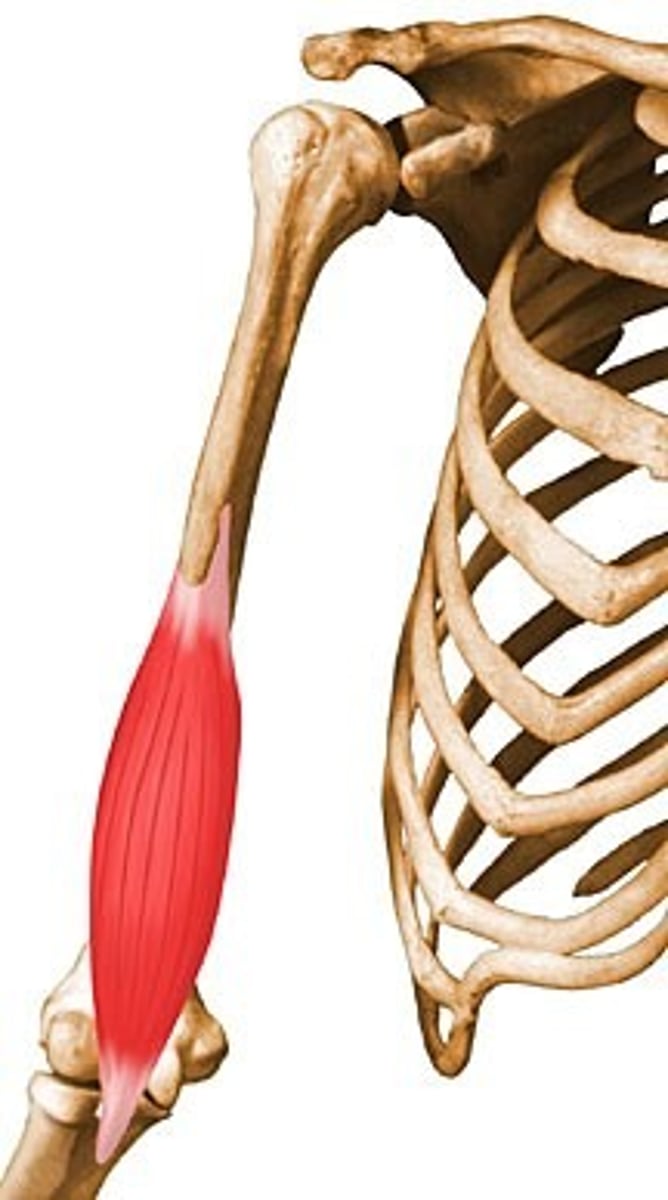
Forearm
What is between the elbow and wrist?
Suprapubic region
What region is this?
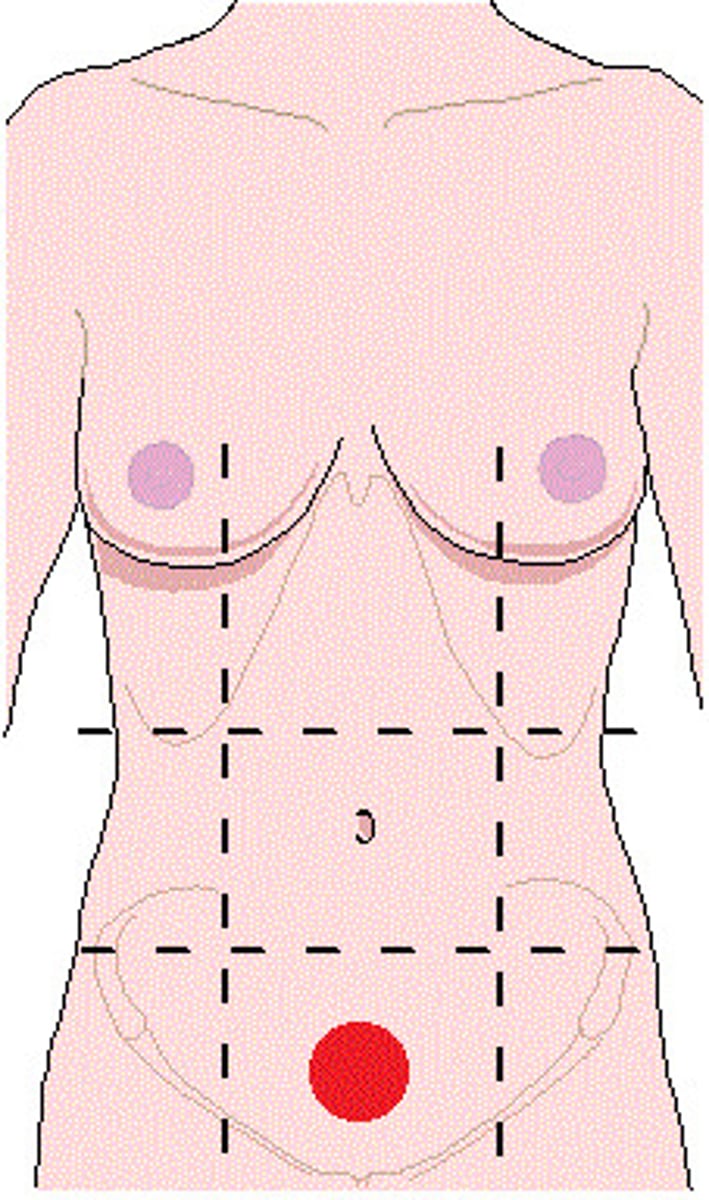
Suprapubic region
What region lies just above the pubic bone of the pelvis?
Inguinal region
What region is this?
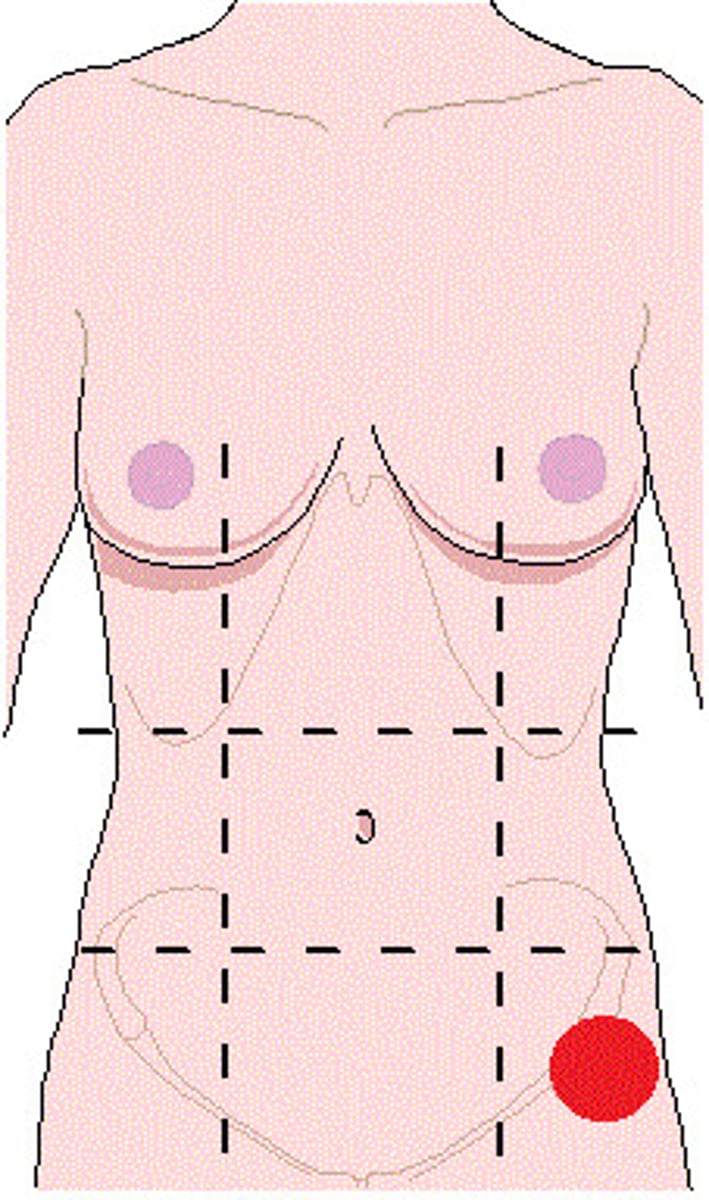
Inguinal region
What region refers to the groin area?
Palmar surface of hand
What is this called?
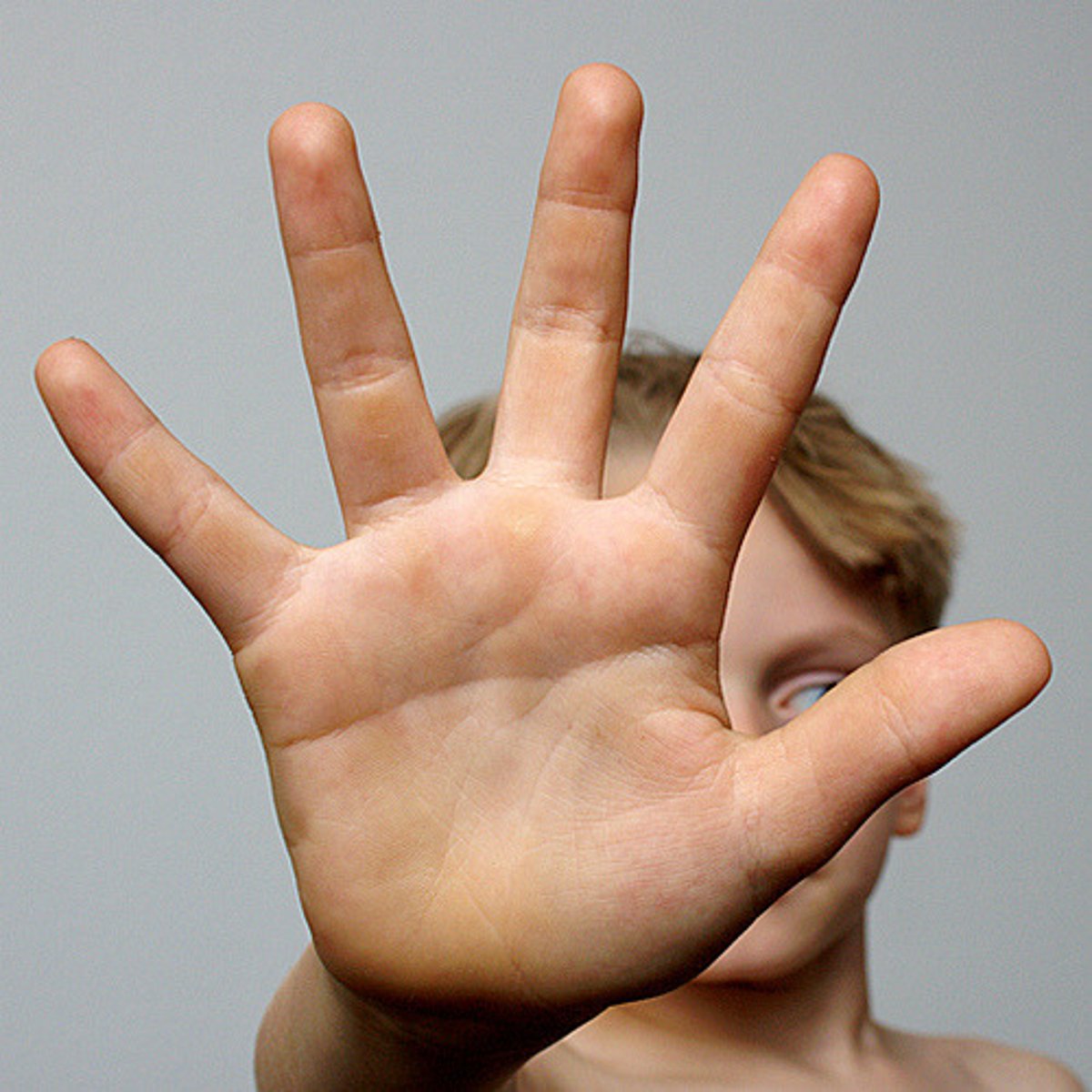
Palmar surface of hand
What refers to the anterior surface of the hand?
Anterior surface of thigh
What is this picture describing?
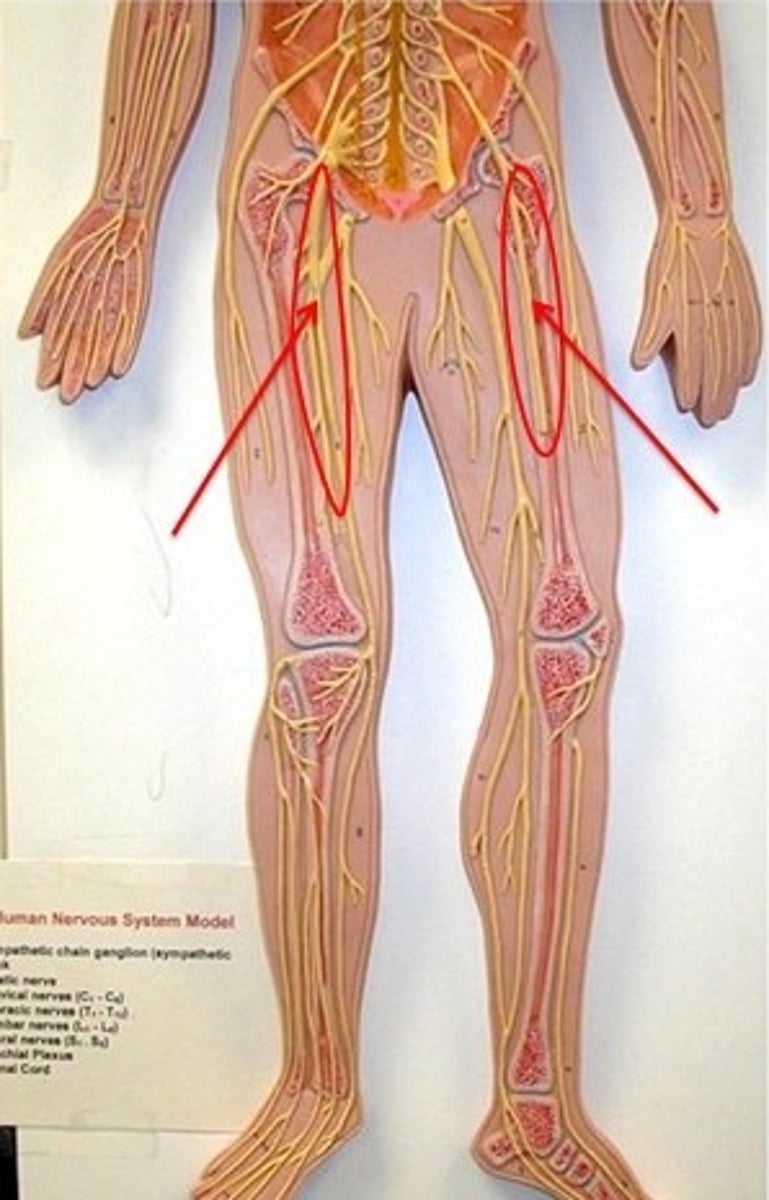
Anterior surface of thigh
What is between the hip and knee?
Anterior surface of knee
What is this describing?
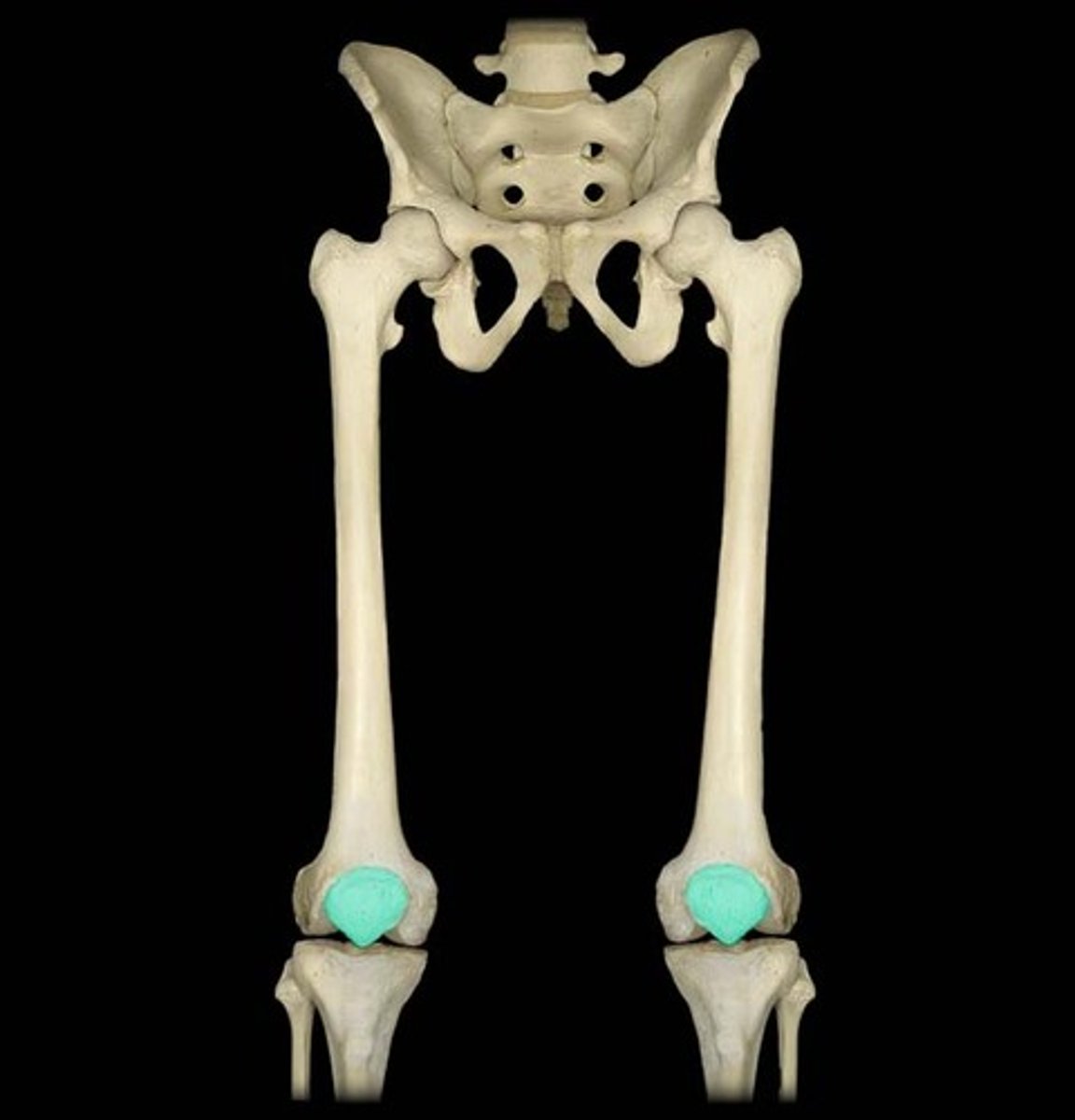
Anterior surface of leg
What is ths describing?
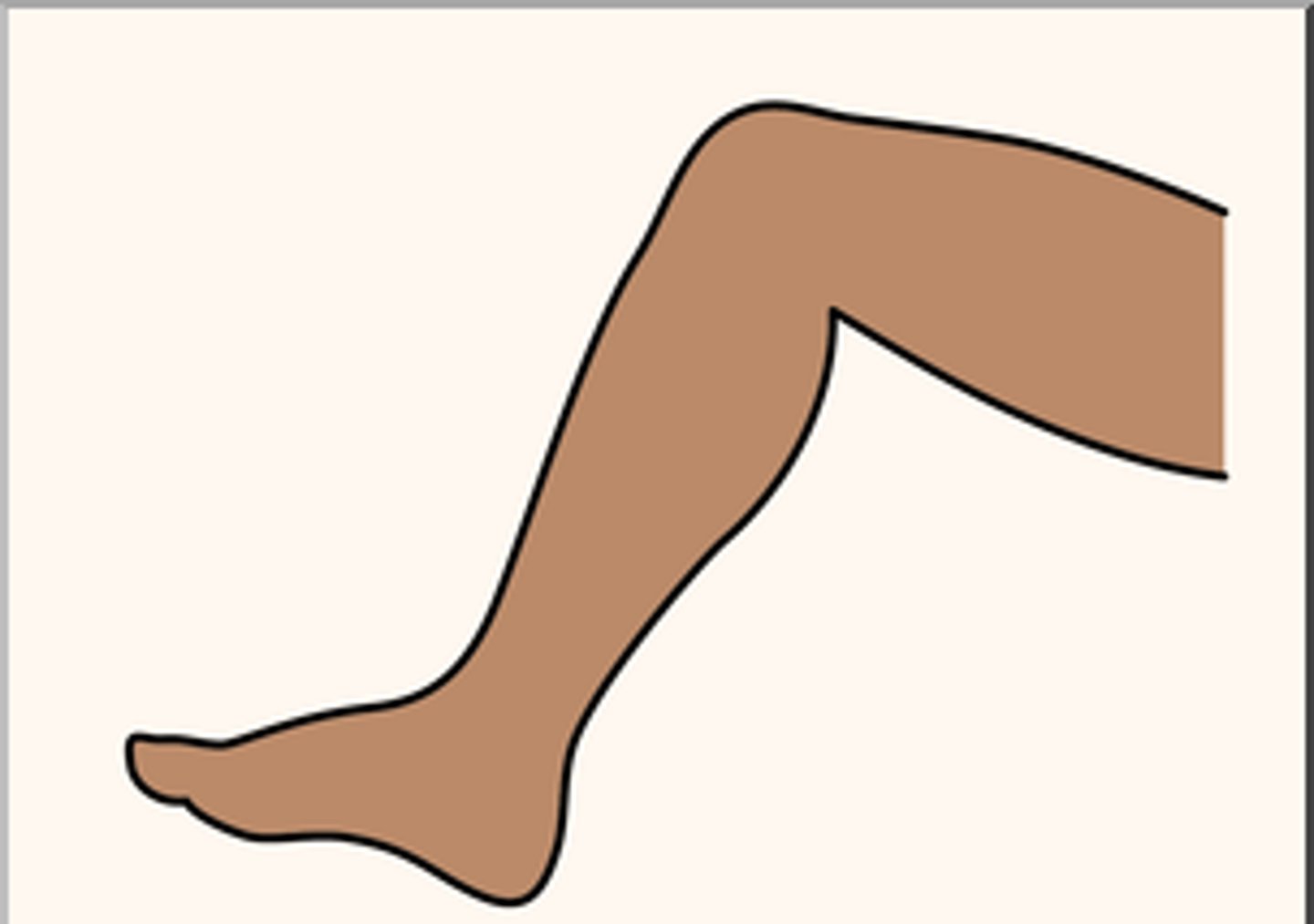
Leg
What is betweent the knee and ankle?
Dorsum of foot
What is this describing?
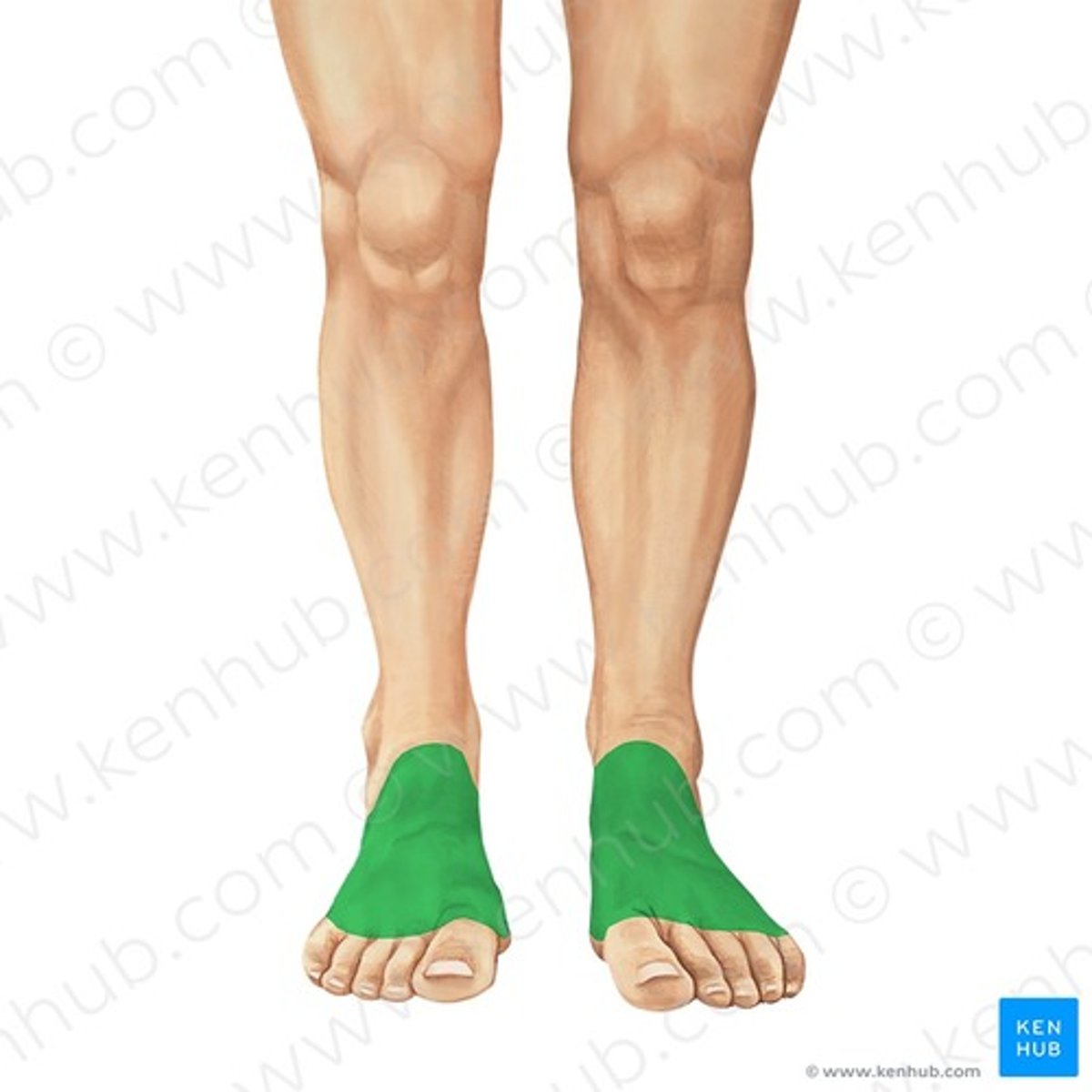
Dorsum
What is a word to describe the "upper surface" of a body part?
Dorsum of foot
What is the upper surface of the foot called?
Occipital region
What is this region called
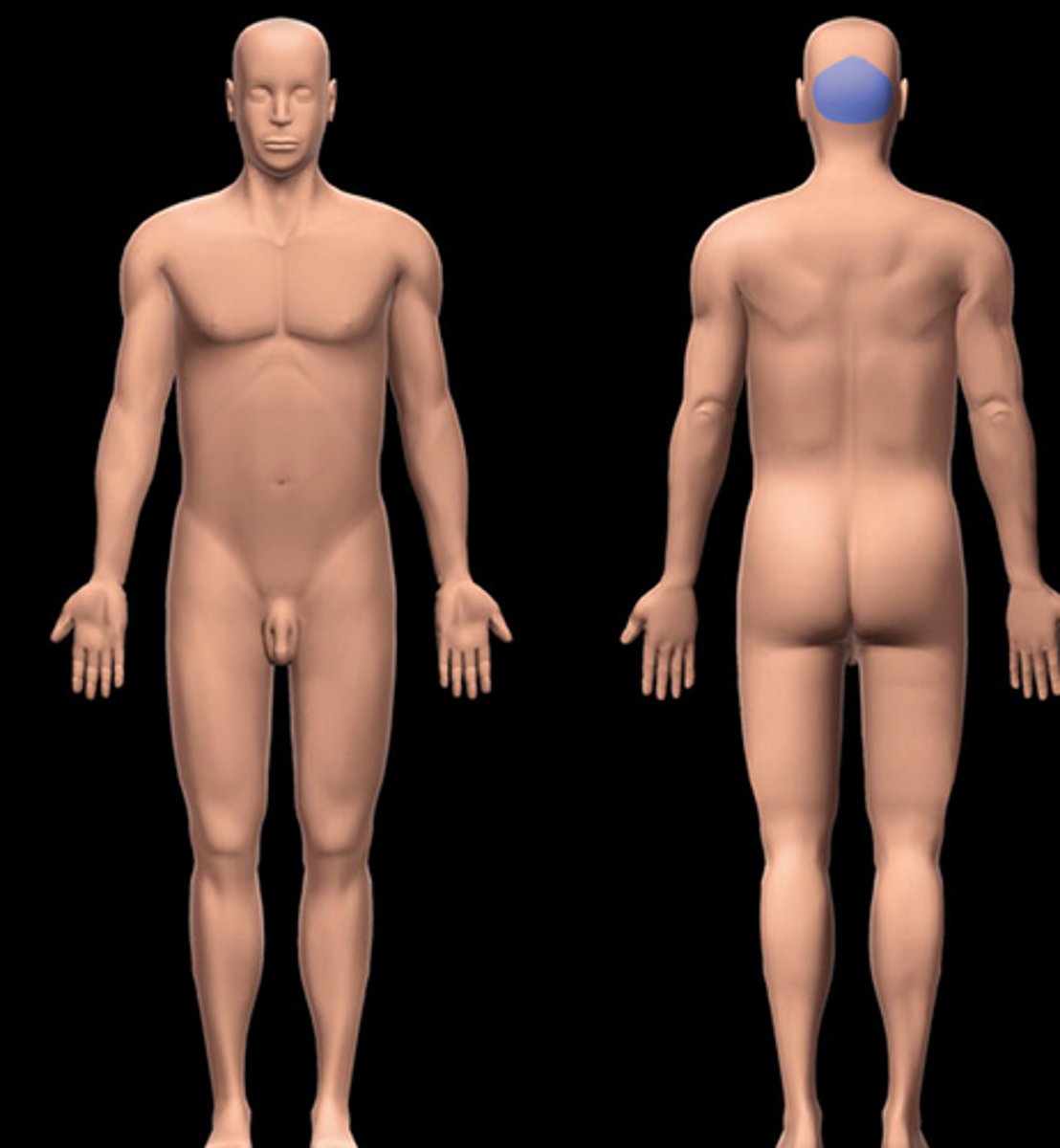
Occipital region
What refers to the back of the head?
Posterior surface of arm
What is this picture describing?
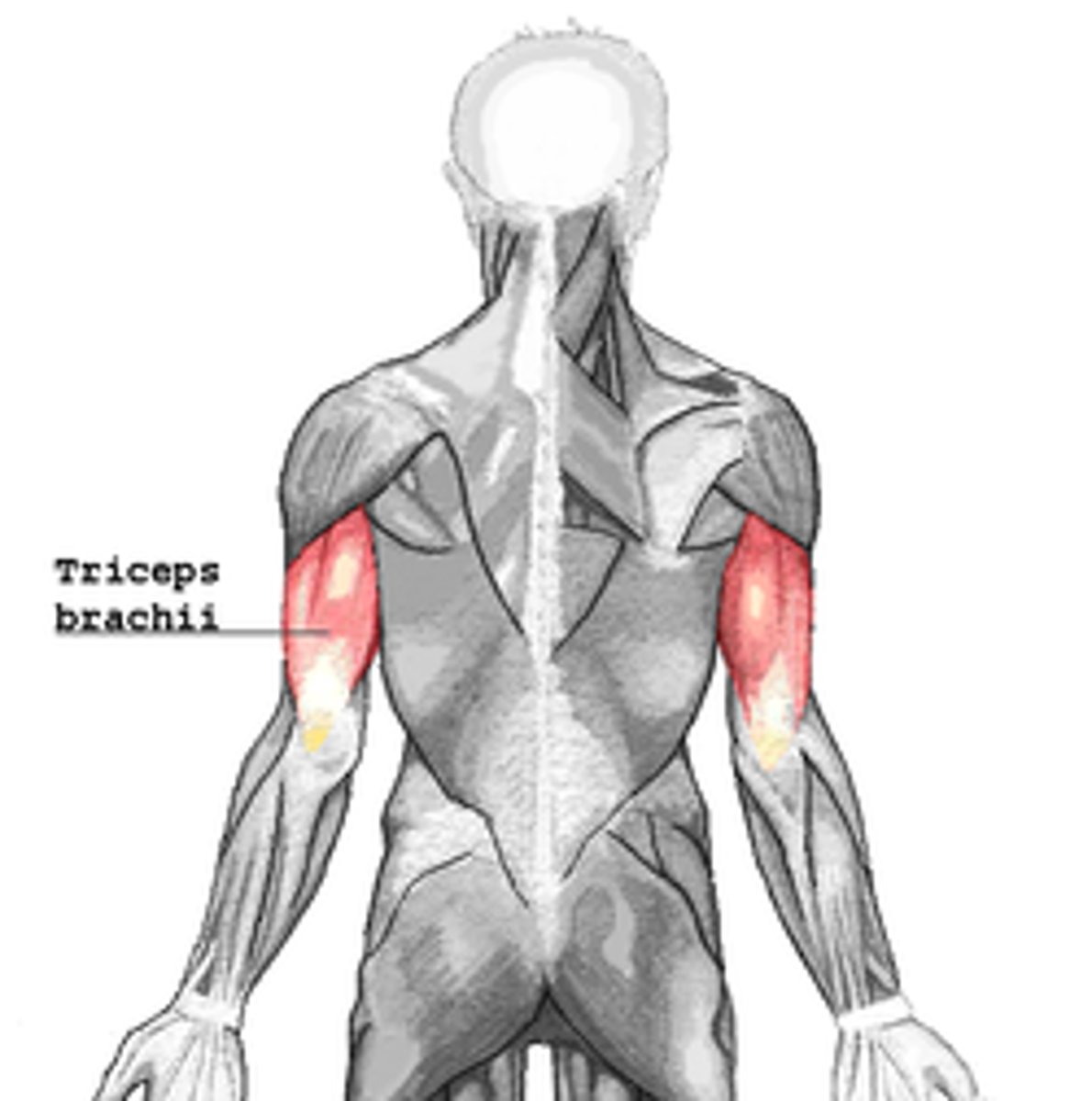
Posterior surface of forearm
What is the back of the forearm called?
Dorsum of hand
What is this called?
